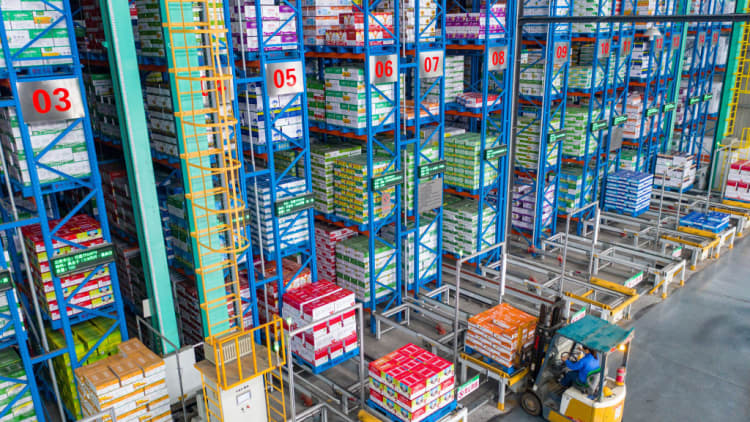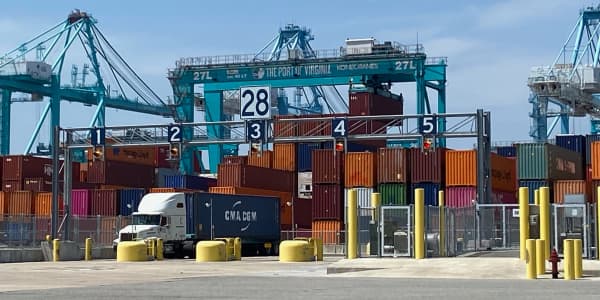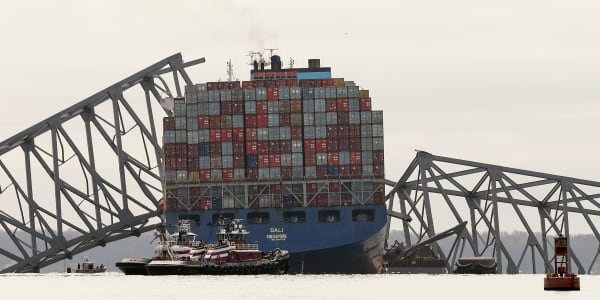
National warehouse storage rates remain elevated, but the prices did not rise quarter over quarter in Q4 2022, according to WarehouseQuote's just-released Warehouse Pricing Index report.
"Rates remain at these levels as a result of warehouse inventories not coming down significantly in November and December," said Jordan Brunk, chief marketing officer of WarehouseQuote.
Warehouse pricing and inventory data are indicators of consumer strength. Even as supply chain inflation slows, warehouse rates are high because there is a lot of inventory, which leaves less available space. The price for that space is sold at a premium. When the consumer is buying, there is more demand, and retailers take out more inventory from warehouses, with extra space putting pressure on warehouse rates.
The December consumer price index inflation data released on Thursday morning was, as expected, a sign of a further inflation easing now that supply chains are operating more normally. The cost of a broad basket of goods and services fell 0.1% for the month, the largest month-over-month decrease since April 2020. Excluding volatile food and energy prices, co-called core CPI rose 0.3%, meeting expectations.
Historic inventory levels occurred last year as companies brought in a lot of supply thinking the consumer would continue to buy. But with the waning of stimulus dollars and the broader economic slowdown amid high inflation, consumer spending has slowed and shoppers have become more selective, forcing retailers to steep markdowns to move product.
As a result, inventory builds have dropped, "but we still have a ways to go before reaching 'normal' inventory levels," WarehouseQuote said in the report.
Retail inventories remain elevated, it noted, up 17% in the 12 month period between October 2021 to October 2022.
Brunk tells CNBC that even as inventory trends down, and supply chain inflation eases, he expects the recent strength in warehouse storage pricing to continue on a steady upward trajectory because of the combination of low vacancy rates, industrial real estate rents, and labor costs, as well as a slowdown in the entrance of newly built warehousing capacity because of rising cost of capital and slowing economy.
In a regional breakdown of price increases over the final three quarters of last year, the Northeast saw the highest percentage increase, at 12%, relative to the baseline of Q1 2022. The Midwest and West Coast regions also saw increases of 8% and 7%, respectively.
"The Northeast has seen an increase with the diversion of trade," Brunk said, referring to the shift in overseas cargo volumes from California to East Coast ports led by New York. "This increase in port traffic also led to an increase in warehouse pricing in the Northeast region. We continue to watch this trend as trade continues to move steadily to the East Coast and Gulf."
New York has been the nation's busiest port for several months, surpassing California and threatening its long-held lead. Shippers have moved away from ports including Los Angeles and Long Beach due to concerns about labor union and port management battles. A recent CNBC Supply Chain survey showed more logistics managers are concerned about moving trade back to the West Coast.
WarehouseQuote's new report cited the movement of furniture away from the West Coast to Texas as one example of this trade diversion.
The Southeast was down overall, but Brunk tells CNBC that Georgia, which has processed a tremendous amount of trade diversion containers, has seen an increase, especially at the Savannah port.
General capacity and lease rates in the Georgia market are up 5.37% year-over-year (2021-2022), according to its data.





